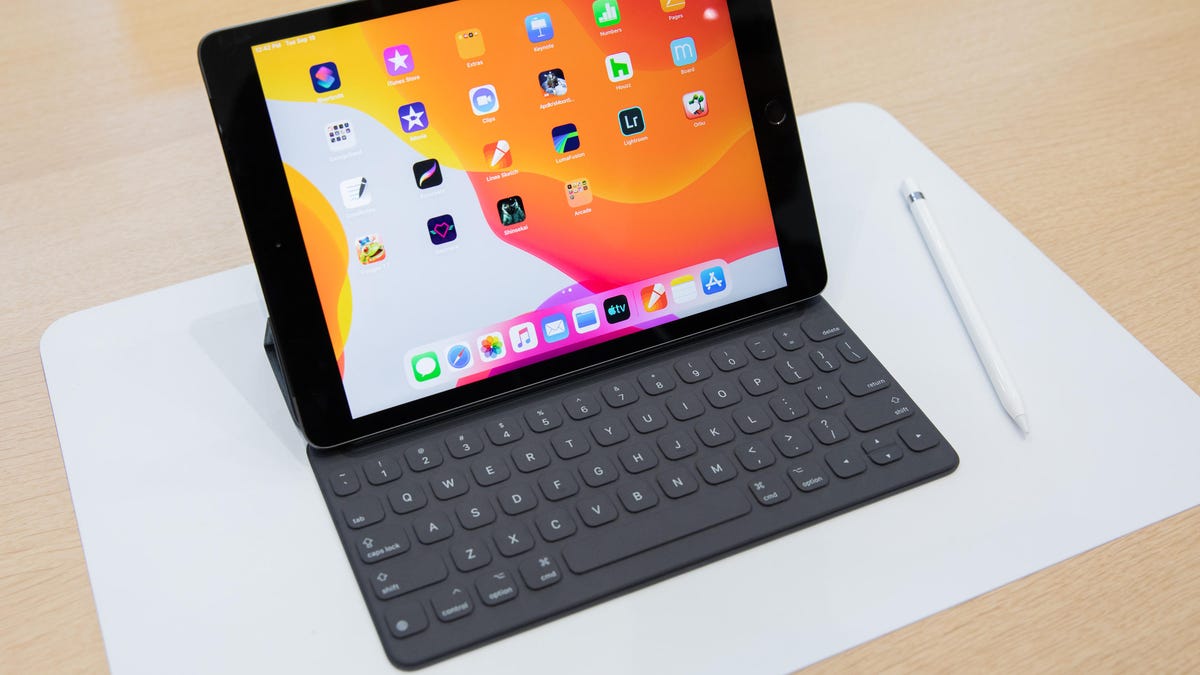 Why You Can Trust CNET
Why You Can Trust CNET Apple's new 10.2-inch iPad is its not-so-secret weapon
With a new, larger screen and more Pro-level features, the entry-level iPad feels more Pro than ever.

The new iPhone 11, 11 Pro and 11 Pro Max have certainly turned a lot of heads at Apple's September event, not least because of the controversial new green color options. But I'd wager that a briefly mentioned update to the entry-level iPad will be a bigger leap for more people. The iPhone updates are largely centered on camera hardware, while the Apple Watch's blink-and-you'll-miss-it internal compass and always-on screen is not going to move the needle more than any other Apple Watch update.
On the other hand, the iPad (Apple's only tablet without a modifier like Air, Mini or Pro), feels like a much-evolved product. Its screen goes from 9.7 inches, a mainstay since the launch of the iPad line in 2010, to a more modern-feeling 10.2 inches. That means there's no current iPad with a 9.7-inch screen, the first time that's happened in the history of the device.
The shift further erodes the line between the standard iPad and the much more expensive iPad Pro , pitched by Apple as a true laptop replacement. Actually Apple pitches this new entry-level iPad as a laptop replacement, too, saying it offers two times the performance of the "best-selling Windows laptop."
Now, as much as I think there's a really great story to be told about the new iPad, that's a pretty shaky comparison. Depending on where you look, the best-selling laptop right now is a sub-$500 plastic slab with either a low-end AMD or Intel Celeron processor. A similarly priced iPad specially tuned to run its custom iPadOS operating system is definitely going to feel faster than a Celeron machine struggling to run Windows 10 smoothly. The same could be said of an inexpensive Chromebook, which will feel faster running Google's light ChromeOS.
So it's not a perfect comparison to a Windows laptop from that point of view, but the other big new feature in the iPad certainly does help it make the case as an alternative to clamshell PCs. By adding the proprietary Smart Connector interface to the edge of the iPad, you suddenly have access to the small but impressive range of high-end accessories made for the iPad Pro and iPad Air . Having tried both types of keyboards, a direct connection to Apple's keyboard cover is a better overall experience than using a Bluetooth keyboard.
Those three dots are the Smart Connector on the new 10.2-inch iPad.
The previous gen of iPad already worked with the Apple Pencil , at least the original 1.0 version of it, and that continues here. Now combined with a larger screen, fast A10 processor and the Smart Connector, there's less daylight than ever between this and the pricey iPad Pro.
Lost somewhere in the middle are the recently revived iPad Mini and iPad Air. Both of those are trapped in the middle, leading neither in price nor features. The iPhone is available in regular and Pro models, the MacBook in Air and Pro models. I'm not sure there's a compelling reason for there to be four distinct iPad product lines. But I am surprised that the entry-level iPad now feels like the model that should survive alongside the Pro.
I go back to my original thoughts on the iPad, dating back to the original 2010 launch model. At the time, I called it a product that came off better in person than on paper. I'd say the same about the new iPad. It adds a bunch of spec tweaks that don't sound revolutionary, but when trying it out in person, I came away more impressed than I expected.

